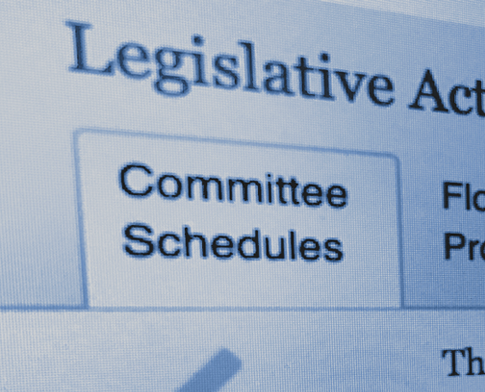Energy Update (February 25)
FERC
On Thursday (Feb. 20), FERC voted against a key certificate for the Jordan Cove project. Republican Commissioner Bernard McNamee surprisingly voted against it after learning of a decision by Oregon’s Department of Land Conservation and Development to reject a needed permit for the site. It rejected a permit due to the potential impact on coastal habitats and endangered species.
The Jordan Cove Project would build a natural gas pipeline and liquified natural gas export terminal in Coos County, OR. McNamee said his vote was “for the time being,” and predicted the commission could vote again as soon as next week. Approval by FERC would clear a federal pathway for the first LNG export hub on the West Coast.[1]
Additionally, FERC granted PennEast a two-year extension to construct its 116-mile natural gas pipeline. FERC said PennEast showed reasonable efforts in moving forward the project, and that granting an extension was appropriate for the applicant to obtain necessary permits for the project.[2]
For the second time in three months, FERC approved changes to power market rules that would make it easier for fossil fuel power plants to stay in business when facing competition from clean energy.
FERC issued orders impacting how the New York Independent System Operator can conduct auctions for electric generating capacity. The new rules will limit wind and solar participation in the state’s capacity market, tilting capacity market rules to benefit both gas and oil field generators and coal. Senate Minority Leader Chuck Schumer (D-NY) criticized the move, saying in a tweet, “FERC has become a wholly-owned GOP subsidiary, doing the bidding of the biggest polluters,” and other critics have described the decision as a bailout.[3]
Chairman Neil Chatterjee (R) described FERC’s actions as “narrow” and intended to “broaden the market’s protections against price distortions.”[4]
45Q Guidance Unveiled
On Wednesday (Feb. 19), the Treasury Department released its initial guidance for the 45Q tax credit. The release marks an important step for the further deployment of carbon capture technology across the industrial and electric sectors.
The first document released by the IRS defined the “beginning of construction” as either “starting physical work of a significant nature” or “meeting a safe harbor based on having paid or incurred five percent or more of the total cost of the qualified facility or carbon capture equipment.” According to an IRS release, the second document clarifies that the agency established “a safe harbor for the allocation rules for carbon capture partnerships similar to the safe harbors developed for partnerships receiving the wind energy production tax credit and the rehabilitation credit.”[5]
This guidance came two years after Congress expanded credits under Section 45Q of the tax code for carbon capture and sequestration technologies, and the IRS documents did not address some complicated issues like credit transfers, which are crucial in moving projects forward. Additionally, guidance on permanent storage is crucial in driving carbon capture adoption.[6]
Carbon capture proponents have been pressing the Treasury Department to act so projects could be finalized and financed ahead of impending construction. Senator John Hoeven (R-ND) said in a statement, “This guidance, which has already taken two years to develop, is an important step, because it allows CCUS project developers to work with their investors and get the ball rolling on putting this technology into practice,” and “that’s what our work on the 45Q tax credit has been all about — implementing CCUS and making sure projects aren’t just technically-viable, but that they work commercially as well.”
PFAS
On Thursday (Feb. 20), the Environmental Protection Agency (EPA) took steps toward setting a federal limit for PFOS and PFOA chemicals. The proposed regulatory determination unveiled by the agency is the first step in a process of setting mandatory drinking water limits for the chemicals.
“The U.S. leads the world in providing access to safe drinking water for its citizens, thanks in part to EPA’s implementation of the Safe Drinking Water Act,” EPA Administrator Andrew Wheeler said in a statement. EPA has not issued a final drinking water limit for any new chemical since 1996, and the exact new limit will not be known for a while.[7]
EPA will seek public comment on its proposed regulatory determination for 60 days.
Budget Hearings
On Thursday, February 27, at 10:00 am, EPA administrator Andrew Wheeler will appear before the House Energy and Commerce Subcommittee on Environment and Climate Change to testify on the agency’s fiscal year 2021 budget. The White House proposes cutting EPA’s funding by 27 percent, from $9.1 billion to around $6.7 billion.[8]
Energy Secretary Dan Brouillette will appear before the House Appropriations Subcommittee on Energy and Water Development, and Related Agencies on Thursday at 2:00 pm, and he will likely answer questions on the proposed cuts to clean energy research programs and the Yucca Mountain nuclear waste site.
References
[1] Dillon, Jeremy. “GOP flip, confusion stall decision in Ore. export terminal.” Greenwire, 20 Feb. 2020. https://www.eenews.net/greenwire/stories/1062403077/search?keyword=FERC
[2] Maldonado, Samantha. “FERC grants PennEast 2-year extension for pipeline construction.” 20 Feb. 2020. https://subscriber.politicopro.com/article/2020/02/20/ferc-grants-penneast-2-year-extension-for-pipeline-construction-9421385
[3] Bade, Gavin, “FERC power market changes deliver win for coal.” 21 Feb. 2020, PoliticoPro. https://subscriber.politicopro.com/article/2020/02/ferc-power-market-changes-deliver-win-for-coal-1882547
[4]Kuckro, Rod. “FERC boosts N.Y. Fossil fuel plants, hamstrings renewables.” Energywire, 21 Feb. 2020. https://www.eenews.net/stories/1062406167
[5] Dillon, Jeremy. “Treasury unveils portion of long-awaited tax credit guidance.” E&E News PM, 19 Feb. 2020. https://www.eenews.net/eenewspm/stories/1062395415/search?keyword=45Q
[6] Anchondo, Carlos. “Federal CCS guidance stirs concerns about industry’s future.” Energywire, 20 Feb. 2020. https://www.eenews.net/energywire/2020/02/20/stories/1062397869
[7] Snider, Annie. “EPA Proposes regulating 2 PFAS chemicals in drinking water.” Politico Pro, 20 Feb. 2020. https://subscriber.politicopro.com/article/2020/02/epa-proposes-regulating-2-pfas-chemicals-in-drinking-water-1882570
[8] Quinones, Manuel. “Wheeler, Brouillette to headline budget hearings.” Greenwire, 21 Feb. 2020. https://www.eenews.net/greenwire/2020/02/21/stories/1062411227
HOUSE.GOV
The Week Ahead
For the main events of the next week and more, go straight to the key events on the house.gov website.
SENATE.GOV
The Week Ahead
For the main events of the next week and more, go straight to the key events on the senate.gov website.


